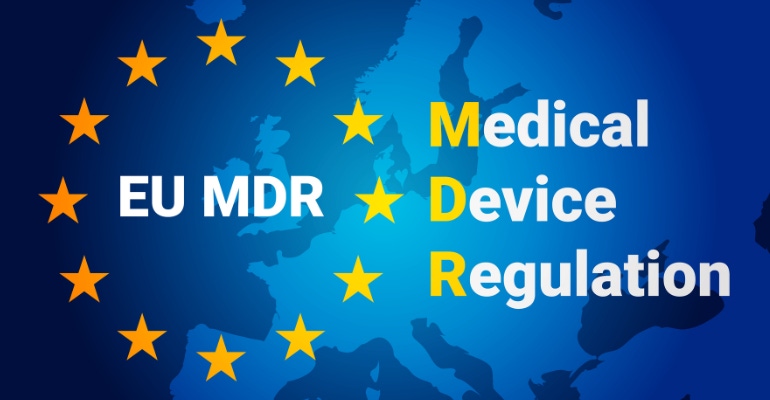EU MDR Challenges Spark Questions
HungeroTrial’s Antal Solyom highlights the overwhelming amount of re-certification applications, noting that some notified bodies aren’t even accepting new device applications.

Currently, both existing CE-mark devices and devices hoping to be sold in the European Union (EU) face major challenges in the conformity assessment procedure for market access. During his session, “Biggest Challenges Faced by Medical Device Manufacturers in the EU,” at the recent BIOMEDevice Boston, MA, Antal Solyom, director of the Medical Device Unit at HungeroTrial, detailed the main bottlenecks and challenges happening as the Medical Device Regulation (MDR) rollout continues.
The MDR, which was issued in 2017, became fully applicable in May 2021 after a one-year postponement, overruling the Medical Device Directive (MDD). Now, all certificates issued under MDD will expire in 2027-2028 under specific conditions, delayed from its original expiration of 2024 due to the overwhelming numbers of applications in need of re-certification.
The reason for the delay, according to Solyom, is that 23,700 certificates under MDD will expire in 2024 and those re-certification cases are being split between 38 notified bodies under the EU. Only 2,950 certificates were issued under MDR by March 2023. Since the roll out of MDR, he noted that the average workload of a notified body has increased by 43% for a certification, and the average processing time is 18 months. Additionally, 85% of the technical documentation submitted to notified bodies in the MDR application is submitted incomplete, meaning that it is rejected, causing further delays.
“Notified bodies are overloaded — most of them do not accept new customers,” Solyom said, continuing that about 16% are not accepting MDR applications for new medical devices. “The MDR is new also for the notified bodies, therefore delays can be expected in the certification process.”
The postponement, however, is only for the notified bodies, not the manufacturers, meaning that companies must still adhere to the 2024 deadlines.
Through the transition to MDR, devices hoping to keep the mark must have lodged a formal application to one of the 38 notified bodies on the market before May 2024, have Quality Management Systems in place before May 2024, and have a signed agreement between the manufacturer and notified bodies before September 2024.
One major change manufacturers must contend with is that for certain risk class products, the clinical data submitted for certification must come from a clinical investigation. Even if the product has been on the market for years, the rules remain the same. If the existing CE-marked product is applying for the same intended uses under MDR, manufacturers are able to go the PMCF clinical investigation route, which is much shorter and less expensive. However, if an existing device wants to add a new intended use, or a newly designed device is applying for the CE-mark, it must undertake a full clinical investigation, which is more expensive and takes much longer to complete.
Other changes and challenges manufacturers must be aware of include the increased amount of technical documentation needed for the MDR, updates to the clinical evaluation consultation procedure with authorities, a change in labeling requirements, the implementation of the Unique Device Identification (UDI) system, as well as periodic reports that must be provided to the notified bodies like the Clinical Evaluation Report, Post Market Clinical Follow-up Report, and Periodic Safety Update Support.
In the session, Solyom recommended taking urgent action if a company’s CE-marks will be affected by MDR. He urged manufacturers to get in contact with their notified bodies and set up a strategy plan — paying keen attention to due dates, collect as much PMS data as possible from the past, do a gap analysis to understand if a device has sufficient clinical data to comply with MDR requirements, and connect with a CRO to help with the clinical investigation if needed.
About the Author(s)
You May Also Like




